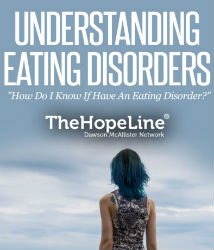Risk factors (body image distortion, loss of control, emotional well-being)
Risk factors for eating disorders include a combination of genetic, environmental, and psychological factors. Some of the key risk factors include:
Body image distortion: Individuals who have a distorted body image, or an unrealistic view of their body shape and weight, are at a higher risk of developing an eating disorder. Societal pressure to conform to a certain body shape or weight can contribute to this distorted body image.
Loss of control: People who have difficulty regulating their emotions or behavior, such as those who have a tendency to engage in impulsive behavior or have difficulty setting boundaries, may be at a higher risk of developing an eating disorder.
Emotional well-being: Individuals who have low self-esteem, difficulty expressing emotions, or have a history of trauma or abuse are at a higher risk of developing an eating disorder. These individuals may use food as a means of coping with difficult emotions or situations.
Other risk factors include:
- Family history of eating disorders
- Dieting or weight cycling
- Being involved in certain sports or activities that place a high emphasis on weight and appearance (such as gymnastics, ballet, or wrestling)
- Having a perfectionist personality
- Being exposed to societal pressure to conform to a certain body shape or weight
It is important to note that anyone can develop an eating disorder, regardless of age, gender, or background. Eating disorders are complex conditions that can affect anyone, and it is important to be aware of the risk factors and to seek help if you or someone you know is displaying symptoms of an eating disorder.










Recent Comments